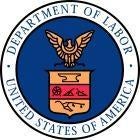Today, women make up nearly half the U.S. labor force and one out of every four women entering the workforce will experience at least one pregnancy while employed. Yet, every year, thousands of women file charges of pregnancy discrimination.
To help us understand pregnancy discrimination, Women’s Bureau Director Latifa Lyles answers four commonly asked questions.
What is pregnancy discrimination?
Pregnancy discrimination occurs when an employer treats a job applicant or an employee unfavorably due to her pregnancy, childbirth or a related medical condition. It could involve refusing to hire or promote a qualified individual because she is pregnant, firing a woman because she missed work to give birth, creating a work environment that is hostile to pregnancy or forcing a pregnant employee to take leave. Pregnancy discrimination can also occur when an employer’s neutral policy negatively affects pregnant workers more than non-pregnant ones.
Pregnancy discrimination is illegal. Pregnancy discrimination harms not just pregnant women and their families, but also employers, who may be cheating themselves by driving away skilled, qualified workers.
Is the Department of Labor taking action to help combat pregnancy discrimination?
While it is already unlawful for federal contractors and subcontractors to discriminate on the basis of pregnancy, childbirth or related medical conditions, the sex discrimination guidelines of the department’s Office of Federal Contract Compliance Programs do not cover all the different kinds of pregnancy discrimination that now arise. On Jan. 28, 2015, OFCCP proposed to update these rules to, among other things, clarify that federal contractors must provide workplace accommodations, such as extra bathroom breaks and light-duty assignments, to employees affected by pregnancy, childbirth or related medical conditions, comparable to the accommodations provided to other workers similar in their ability or inability to work, such as employees with disabilities or occupational injuries.
What resources do pregnant workers have?
At the federal level, women are protected by laws like Title VII of the Civil Rights Act, the Pregnancy Discrimination Act, the Americans with Disabilities Act, and the Family and Medical Leave Act.
In courtrooms and city halls and state legislative chambers across the country, states are also taking action. In the past year alone, state and local governments in Illinois, Delaware, Maryland, Minnesota, New Jersey and West Virginia have enacted legislation requiring employers to provide reasonable accommodations, such as stools to sit on or light-duty assignments, to pregnant workers.
Also, the Women’s Bureau has created an interactive map of federal and state employment protections for workers who are pregnant or nursing.
Why are these protections necessary?
Today, most women work during pregnancy, often into their third trimester. Laws prohibiting pregnancy discrimination are necessary because they ensure that women who want to work during pregnancy do so under the same conditions as non-pregnant employees. They also ensure that women who are not able to work due to a pregnancy-related disability are treated the same as non-pregnant workers who are similar in their inability to work. These laws help make sure that the U.S. workforce is operating under the best possible conditions — those in which all workers have an equal opportunity to contribute their skills and experience.


 i
i


